
by Cynthia Calhoun | Oct 30, 2019 | Blogs, Home Page News
Learning about the Rock Cycle
First graders have been studying the rock cycle, and they’re learning it through the seven domains: the mental domain, creative, and natural, among others.
The story of Piedra
Have you heard of Piedra? She’s the main character in the story their teacher, Rachel, told. Students gathered around while they heard the tale of Piedra, whose journey spanned MILLIONS of years.
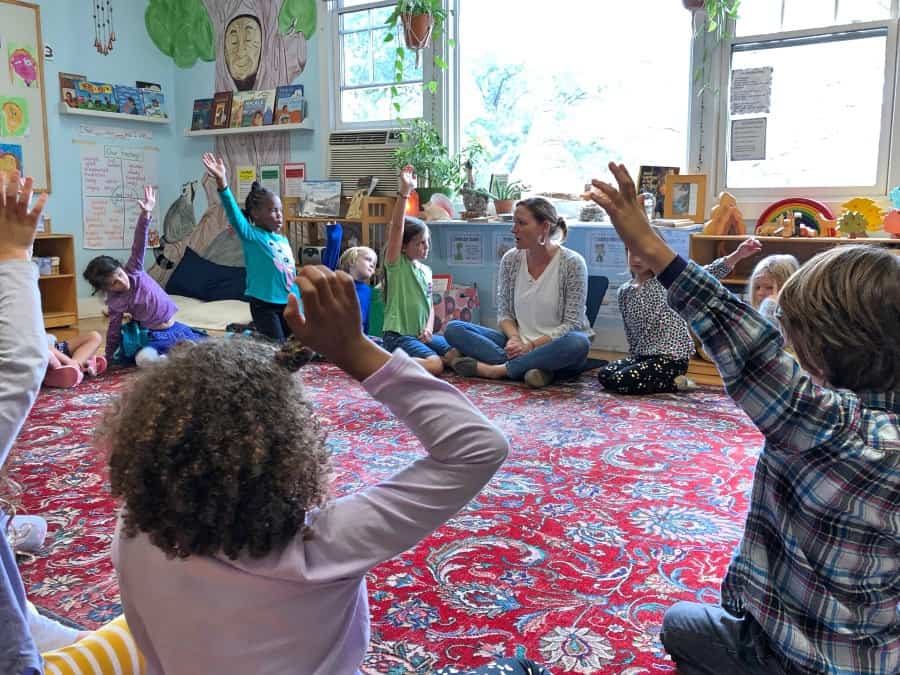
Rachel told of how Piedra lived in Appalachia, then made her way to a nearby river where she stayed for hundreds of thousands of years. Over the course of that time, she witnessed turtles, ducks and river otters going about their lives. Little by little, Piedra rolled and rolled downriver, eventually finding herself out at sea. Piedra saw sea animals that she’d never seen before swimming all around her.
Millions of years in the making…
Gradually sand and silt from the sea bottom began to cover her up until she was completely buried, taking about 20,000 years to happen. Piedra stayed there for another million years until she felt a warmth coming from the earth. She felt a whoosh and before she knew what happened, she erupted through a volcano as hot lava, and immediately cooled once she hit the air. She emerged once again as a rock upon a mountain. Only this time, she was a rock who had changed.
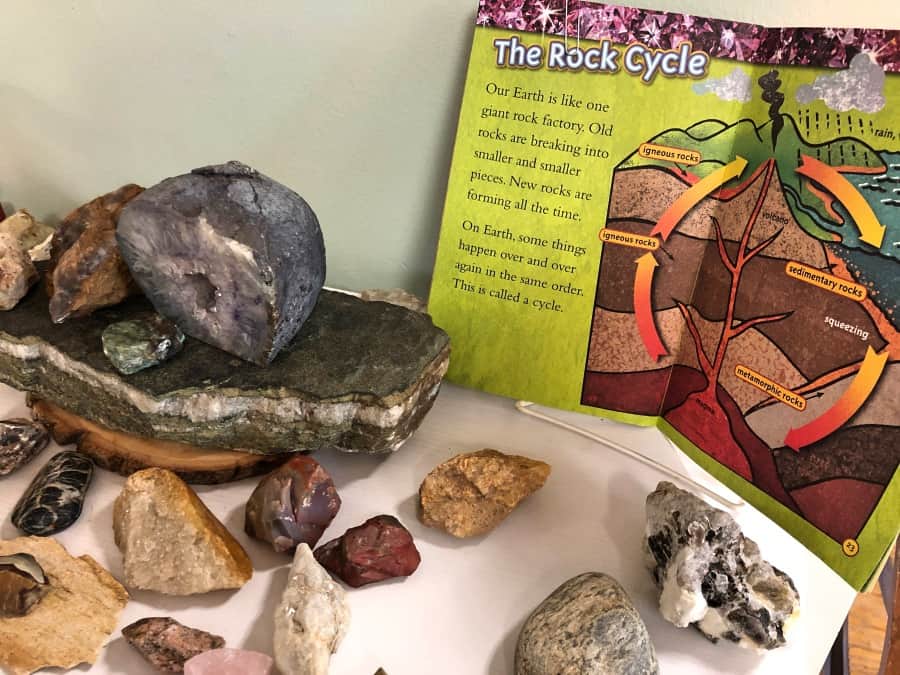
Through this compelling story, students learned about how a rock might go through the entire rock cycle. They talked about other cycles they might be familiar with: the lava cycle, the water cycle, and the butterfly cycle.
Illustrating the Rock Cycle
After students heard the story, they had an opportunity to create an illustration of the rock cycle. Miss Rachel led them through a guided drawing.
They began with a line.
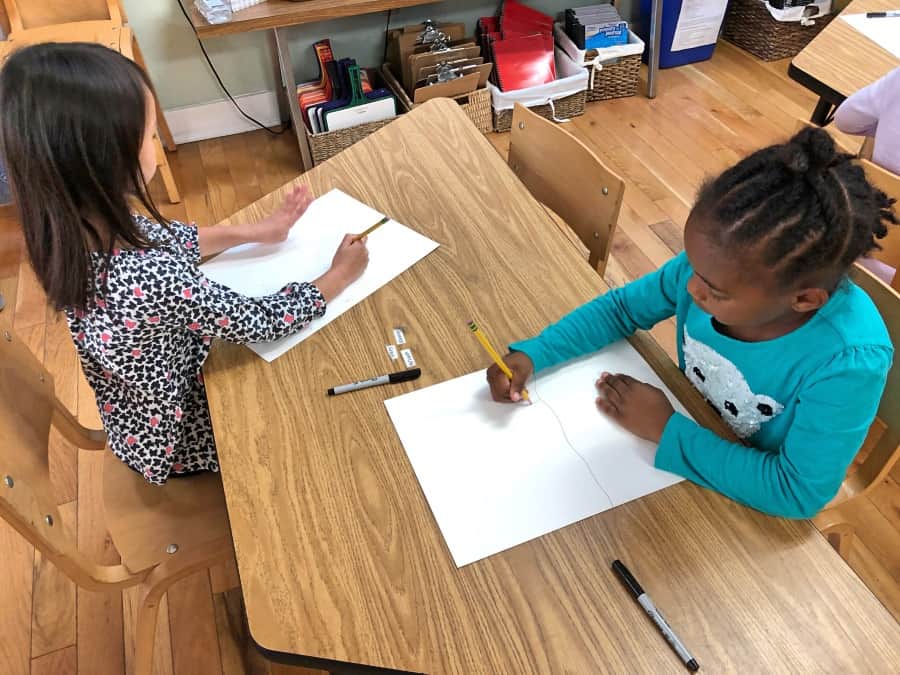
Followed by a volcano.
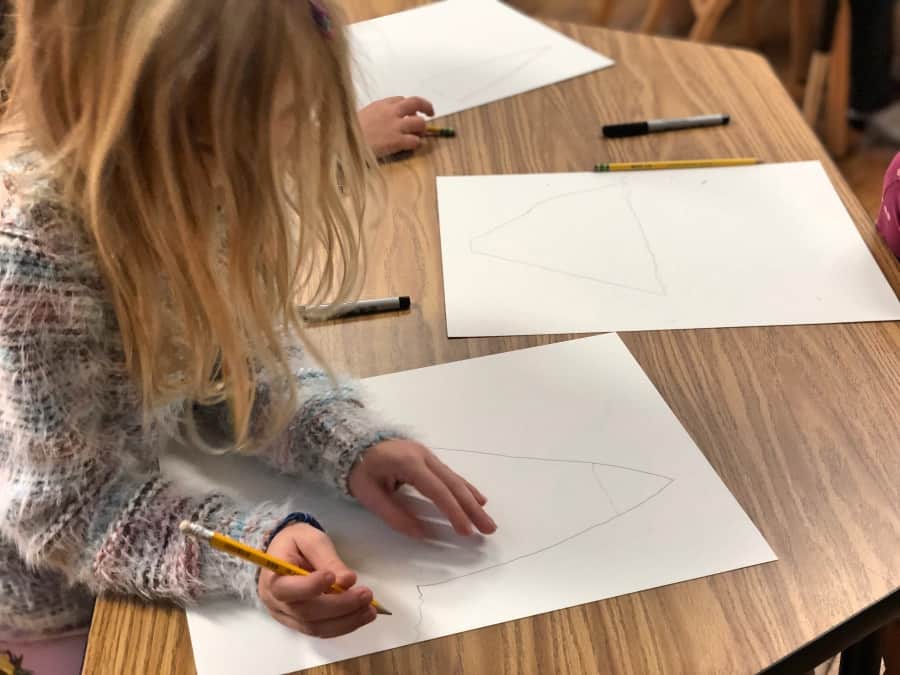
Next they erased the left part of the line and replaced it with a wavy ocean line.
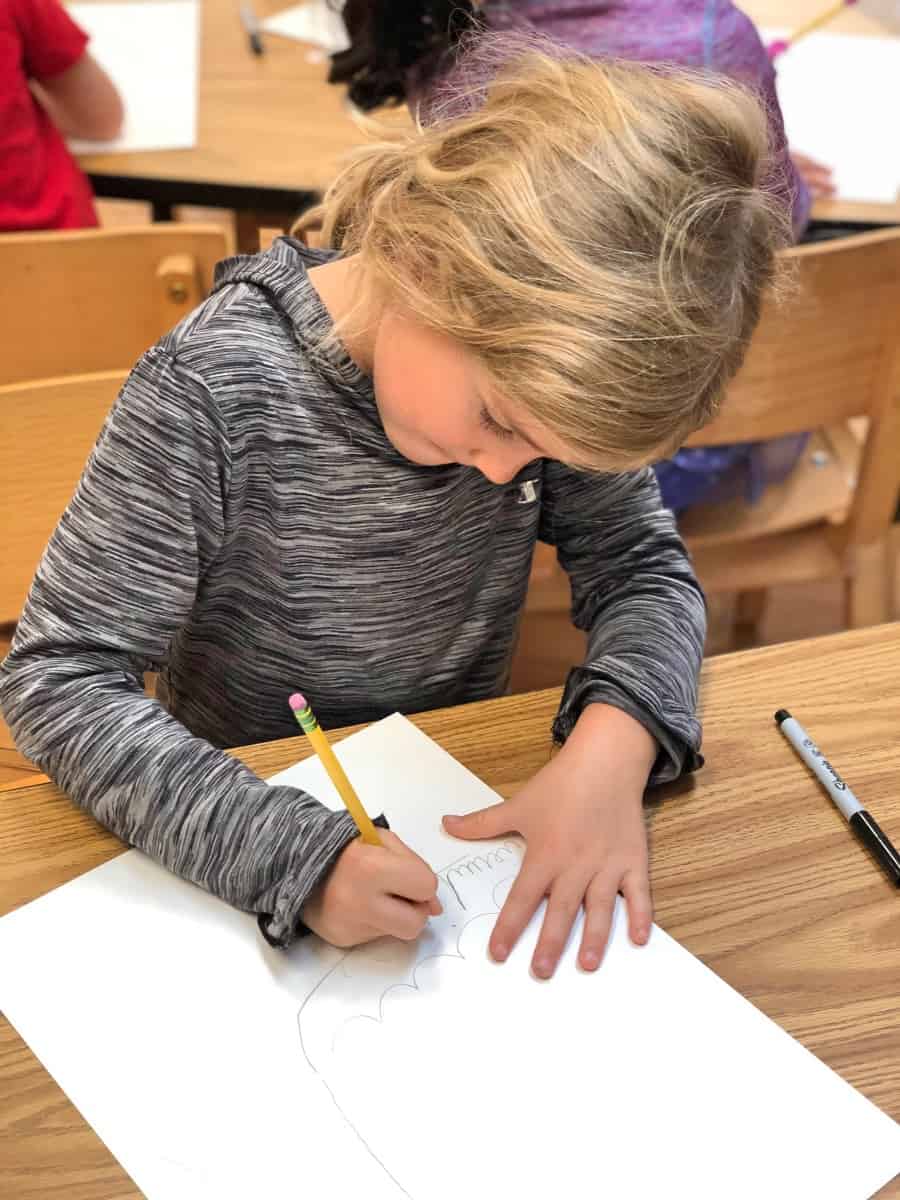
They followed that with a “lava ball”…
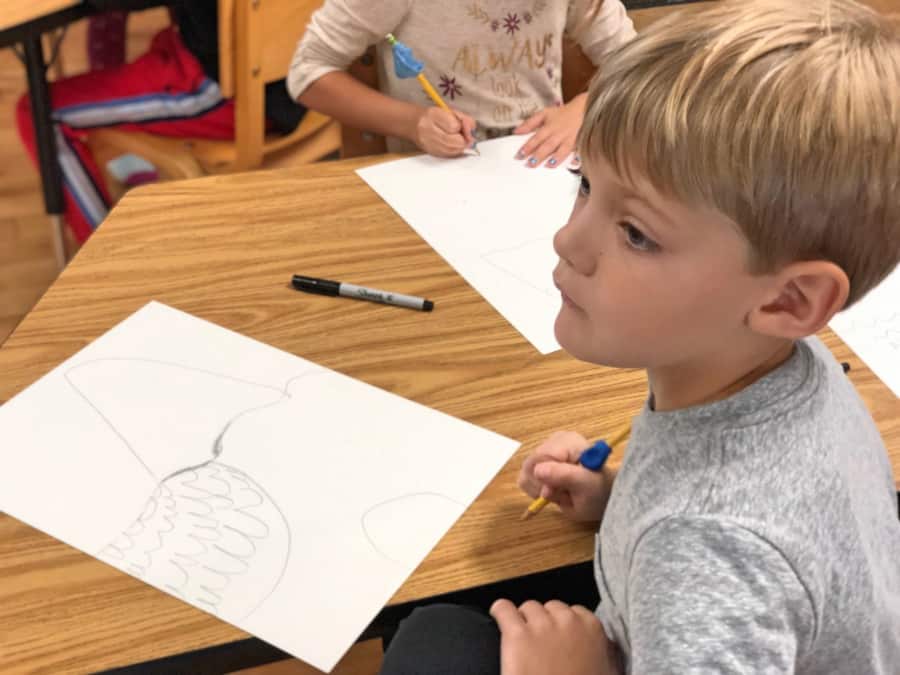
…that grew into a lava chute.
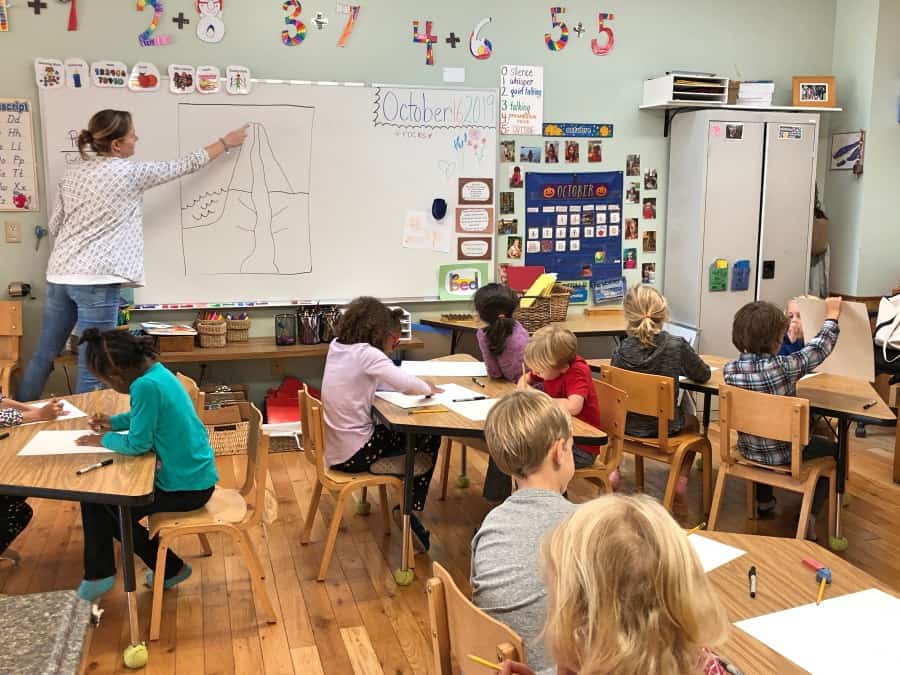
They erased the top of the volcano to allow the lava to exit the earth, and had some fun drawing globs of lava “splashing out and spilling over the side”.
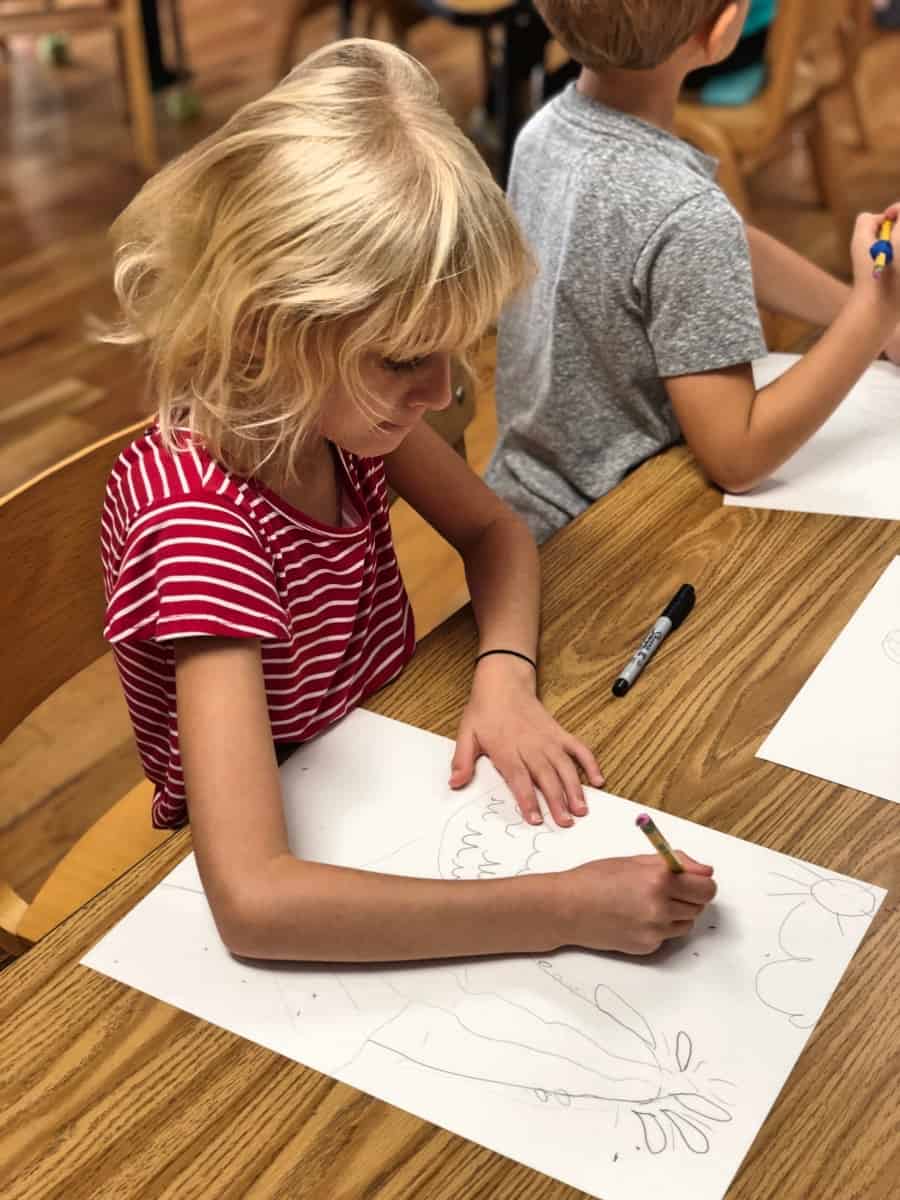
Next came creative layers that represented millions of years of creation.
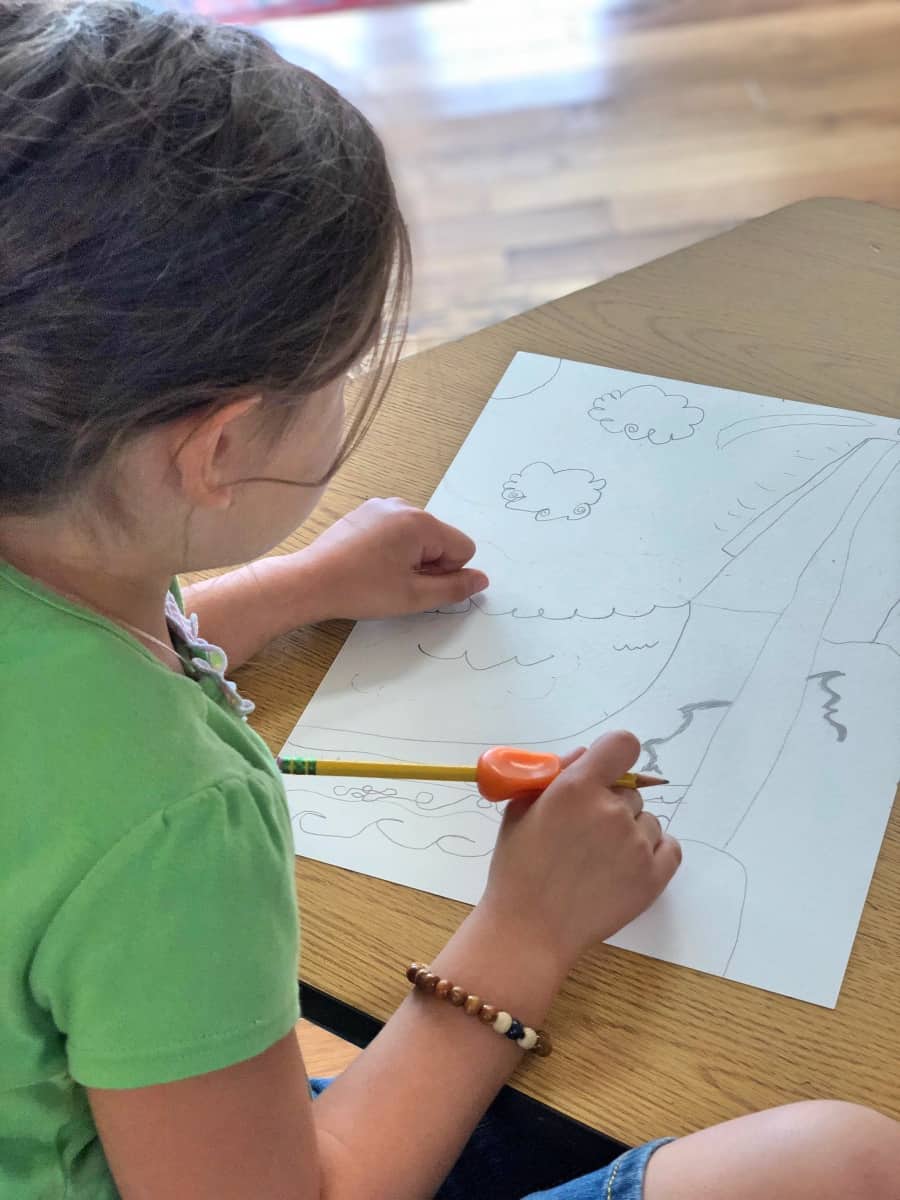
The final steps were to go over their pencil lines in marker…
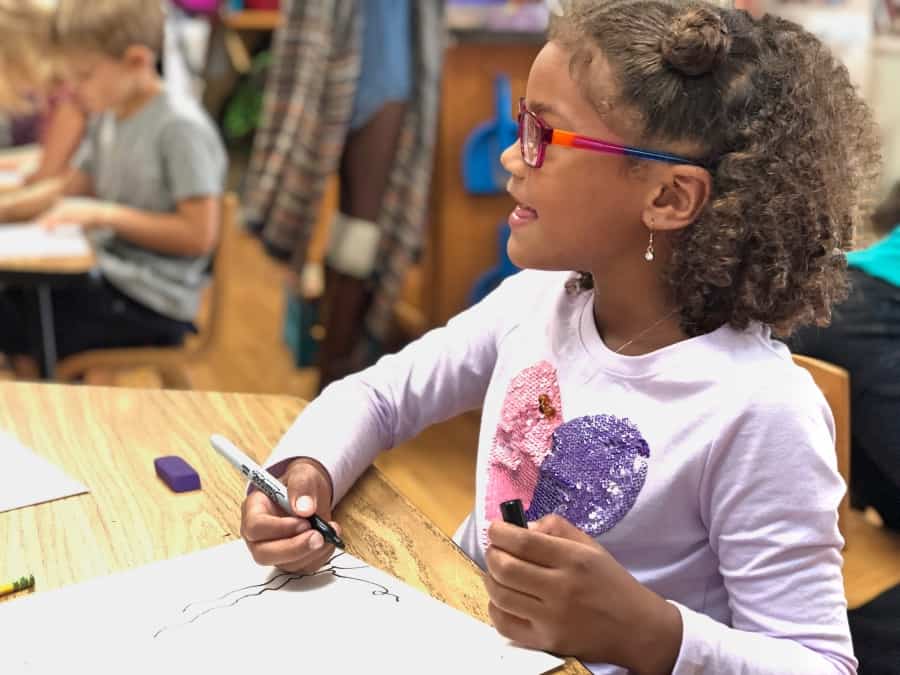
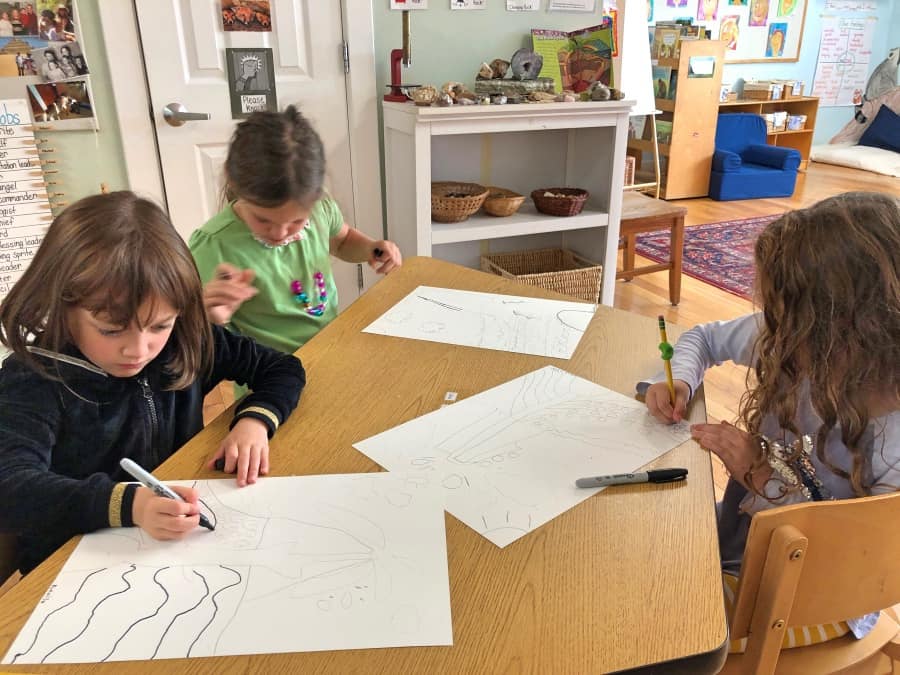
…and fill in their drawings with watercolors.
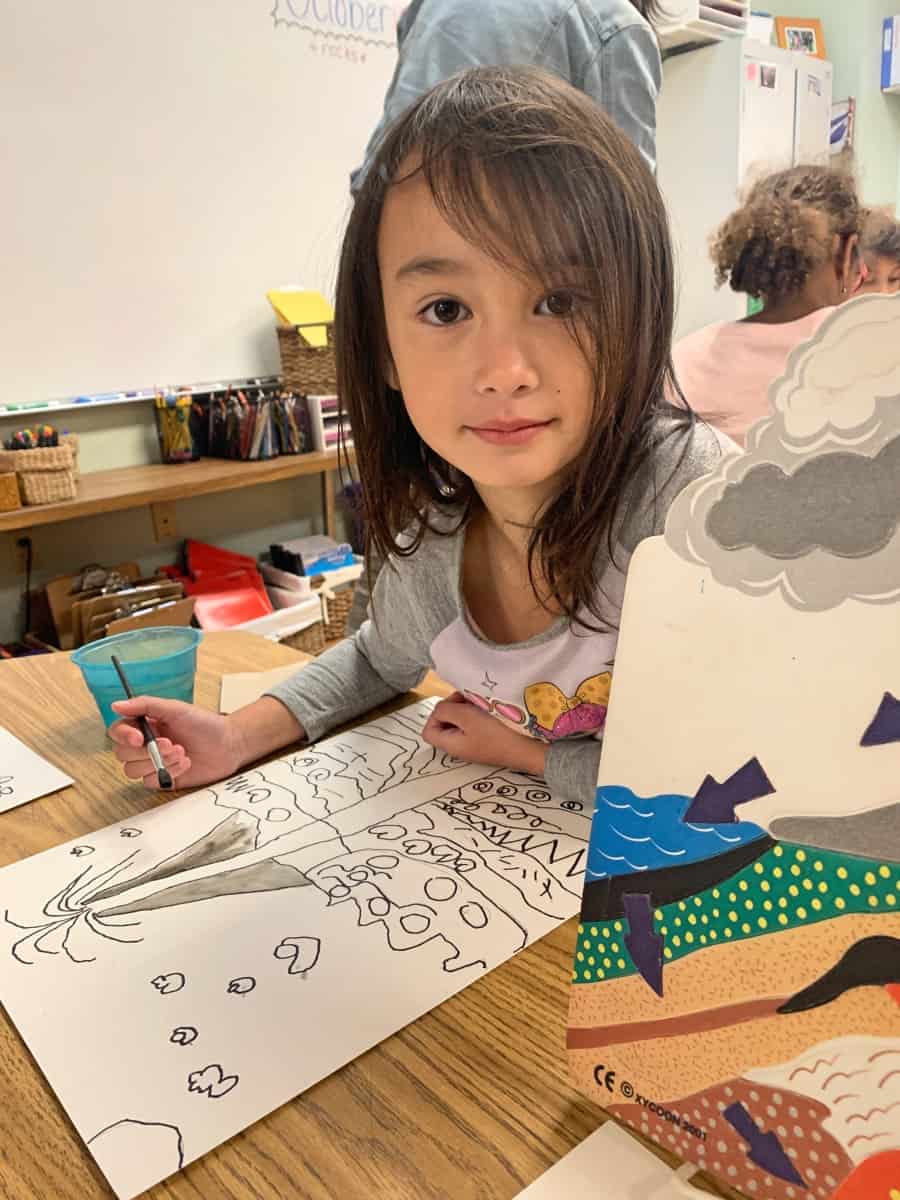
Our first graders now can tell you all about the rock cycle, starting with a tiny little rock on the side of a mountain.
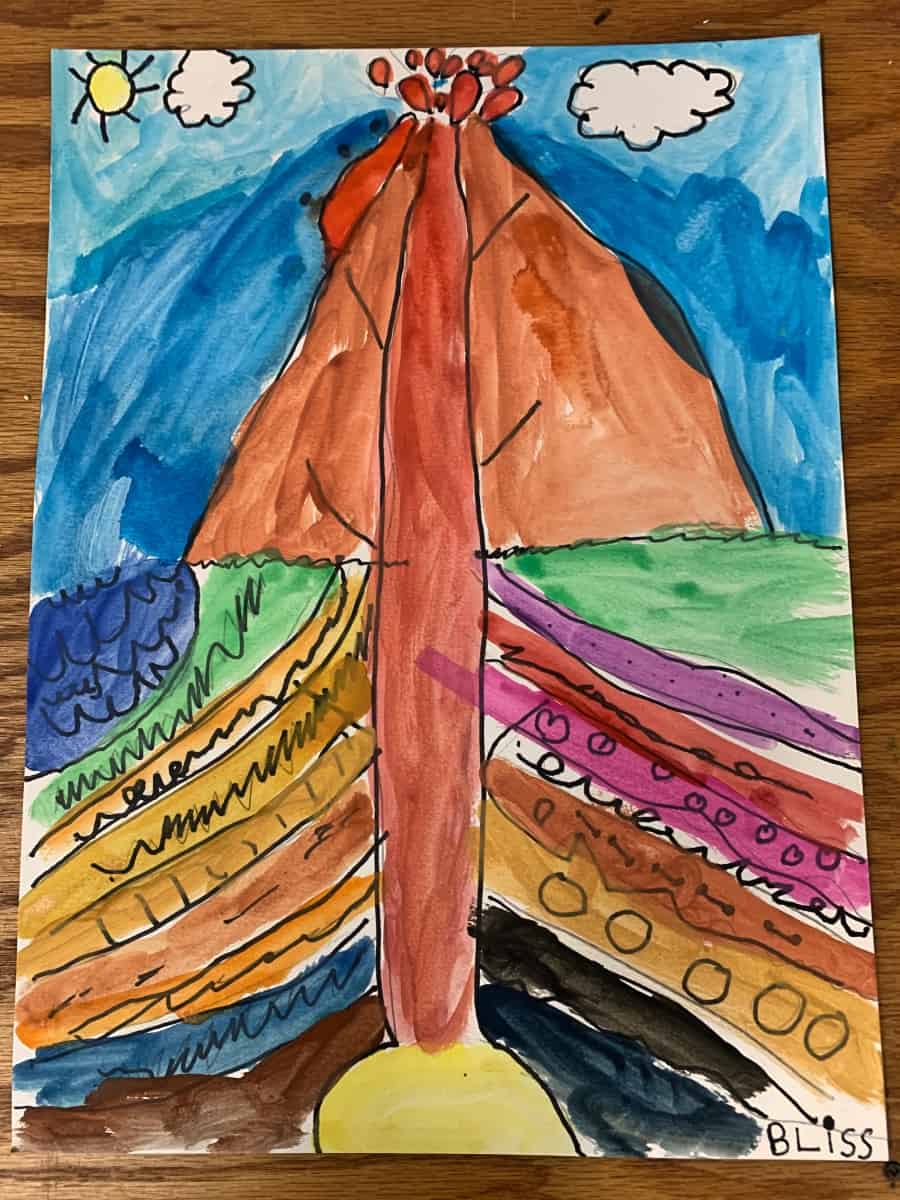
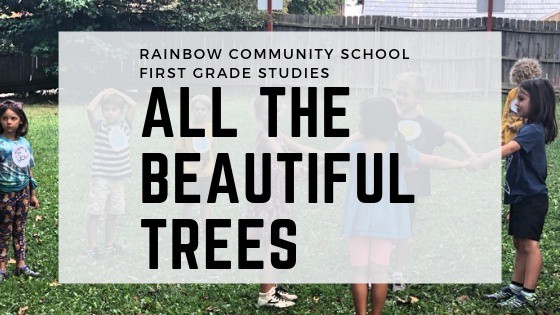
by Cynthia Calhoun | Sep 12, 2018 | Blogs, Home Page News
First Grade Studies Beautiful Trees
We stepped into first grade recently, into a veritable classroom forest. There were displays of books about trees, nature artifacts that reminded us of our natural roots, and artwork that featured patched trees and their individual parts. First grade is studying beautiful trees in all their splendor.
The first grade “wolves,” as they call themselves, were contentedly reading to each other. They quietly tried out new words and soaked up fun ideas from illustrated books.

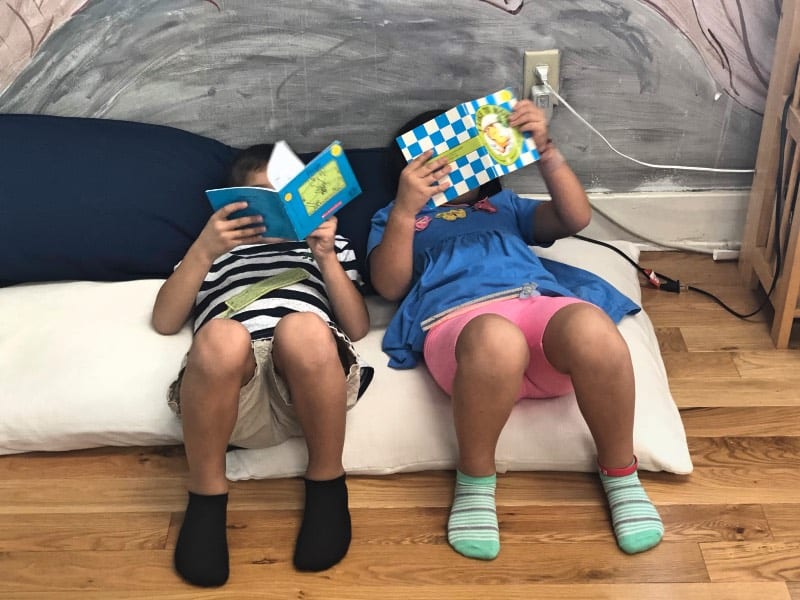
The Story of Trees
Their teacher, Rachel, guided them into a circle where they recited a poem about trees. They swayed like leaves, or dropped to the floor like apples. They sang and recited verses from the song, “I’m a Tall, Tall Tree.” At the conclusion, students huddled together to hear a story.
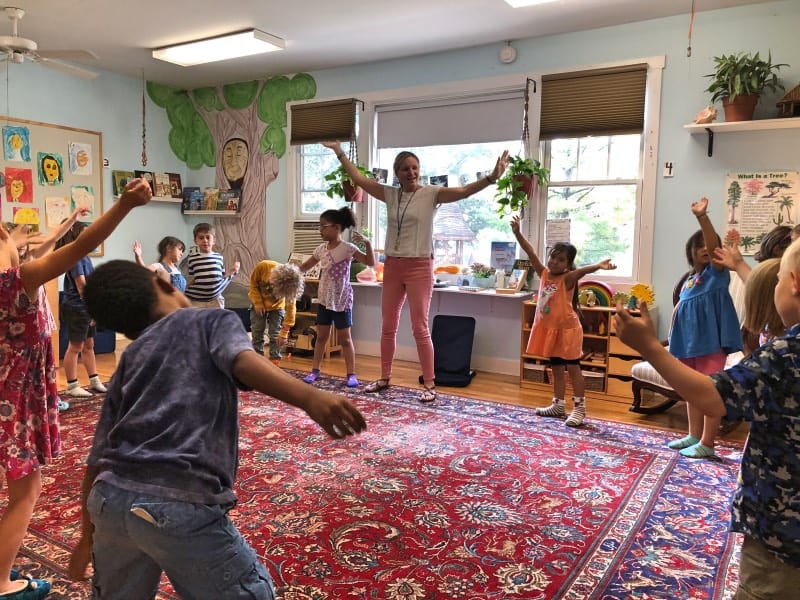
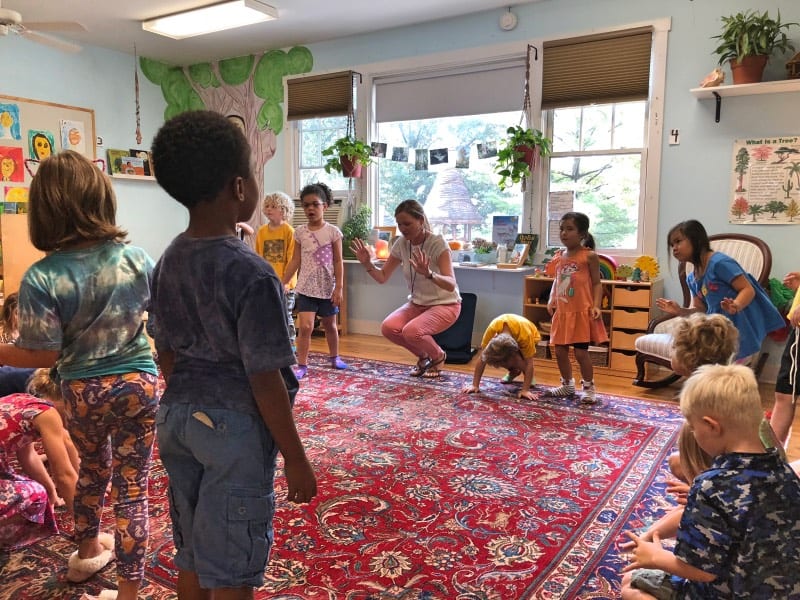
Ms. Rachel read about many different trees that grow. She asked her students about all the different varieties they might have already known: “Apple tree!” one said. “Maple! Peach! Magnolia!” chimed others. First graders are about the same age as it takes for an apple tree to mature: 6-10 years, depending on the species.
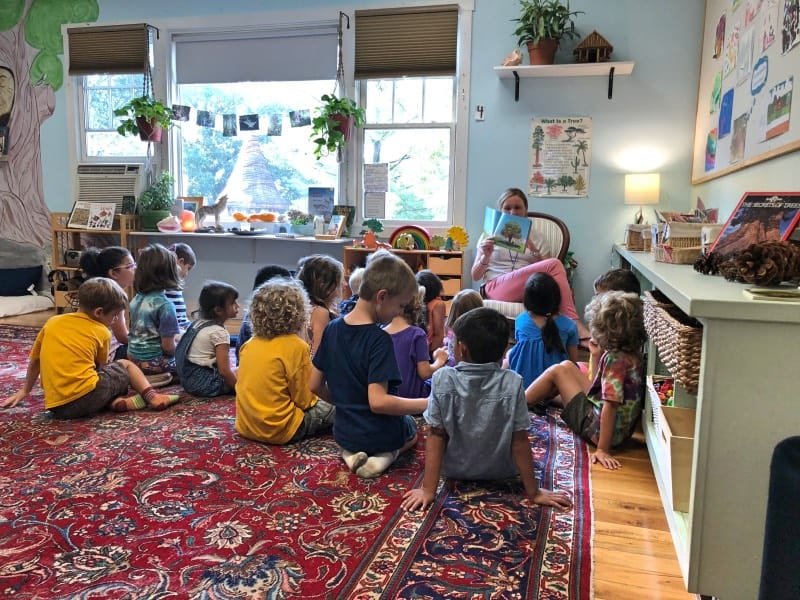
The Four Elements to Make a Tree Grow
They arrived to a part in the book that detailed the four elements of what trees need to grow big and strong.
These first graders already knew:
Air. Water. Soil. Sunlight.
A Little Space
But there was just one more thing that trees needed to grow. What was it?
Rachel called up one student. Then another and another until there were four, standing so close together they could hardly breathe….
All these students were “trees that hadn’t fully grown” and they quickly figured out what that last thing was. Trees need space.
These four students spread out and demonstrated how having a little space made it much easier to spread and grow.
So many life lessons in that statement: having a little space makes it much easier to spread and grow.
The Natural and Physical Domains
There was more. Each student became an “element.” Rachel handed out cards of either air, soil, water, or the sun. Students wore them as badges of honor as they imagined they were air, water, soil, or sunlight. They lined up to head toward the outdoor classroom to incorporate two different modalities of learning: the natural and physical domains.
Rachel’s instructions were to run around the outdoor classroom, but when they heard, “1-2-3-GROW!” each person had to find the other elements that would make a tree. When all four students – elements – were joined, they’d make a circle, giving themselves some space. As they successfully “grew into a tree,” they’d exclaim, “I’m a tree! I’m a tree! I’m a tree!”
After several rounds of finding the different elements, students returned to their classroom. This space is a peaceful oasis that peers out to the Gnome Village below, giving the impression that they are, in fact, in a tree house. We knew they were secure in the knowledge that they wouldn’t soon forget what makes a tree grow from a seedling into a sprawling giant.
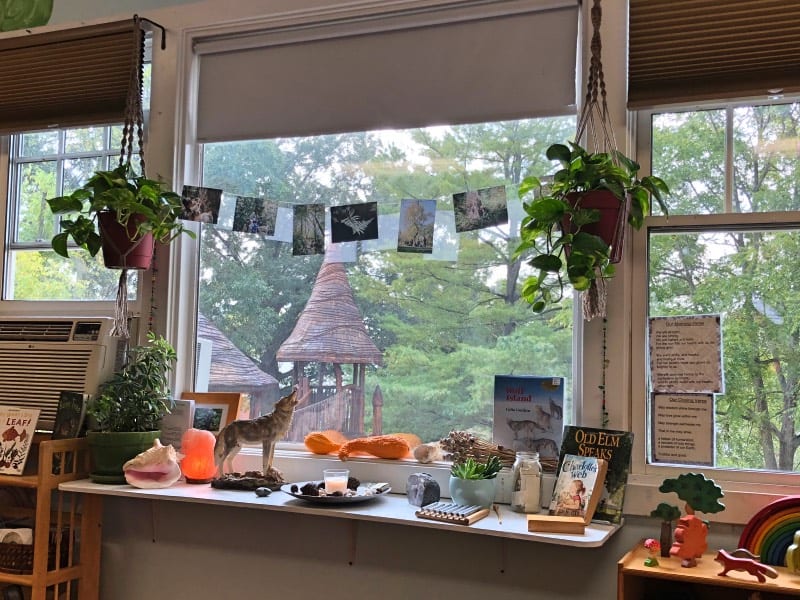
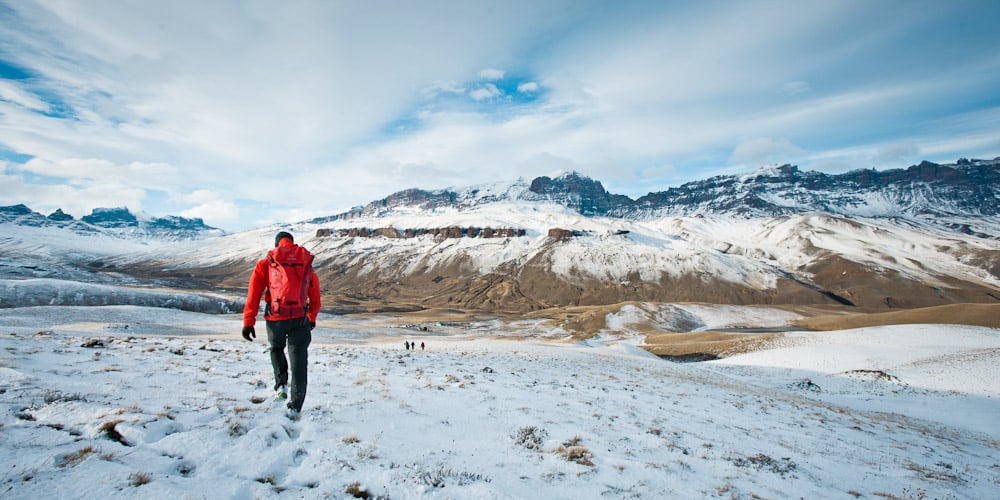
by Renee Owen | Apr 25, 2016 | Director's Blog, Home Page News, News
Check out this interview with Dan Siegel on the psychology and sociology of our environment. At Rainbow I often stress that helping students cultivate a deep and personal relationship with the natural world is our only hope of saving it, as they will only protect what they love. Dan Siegel shares that same sentiment adding the notion of “mwe.” When we learn to see ourselves as integrally connected to all things and to one another, we will end the destruction of our time and begin taking care of one another and the planet that sustains us. It all begins with love.






























